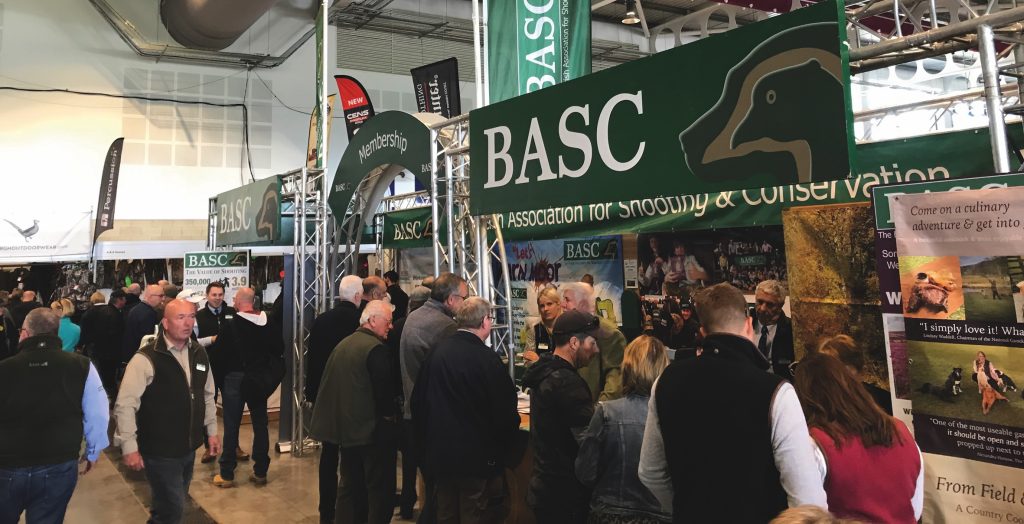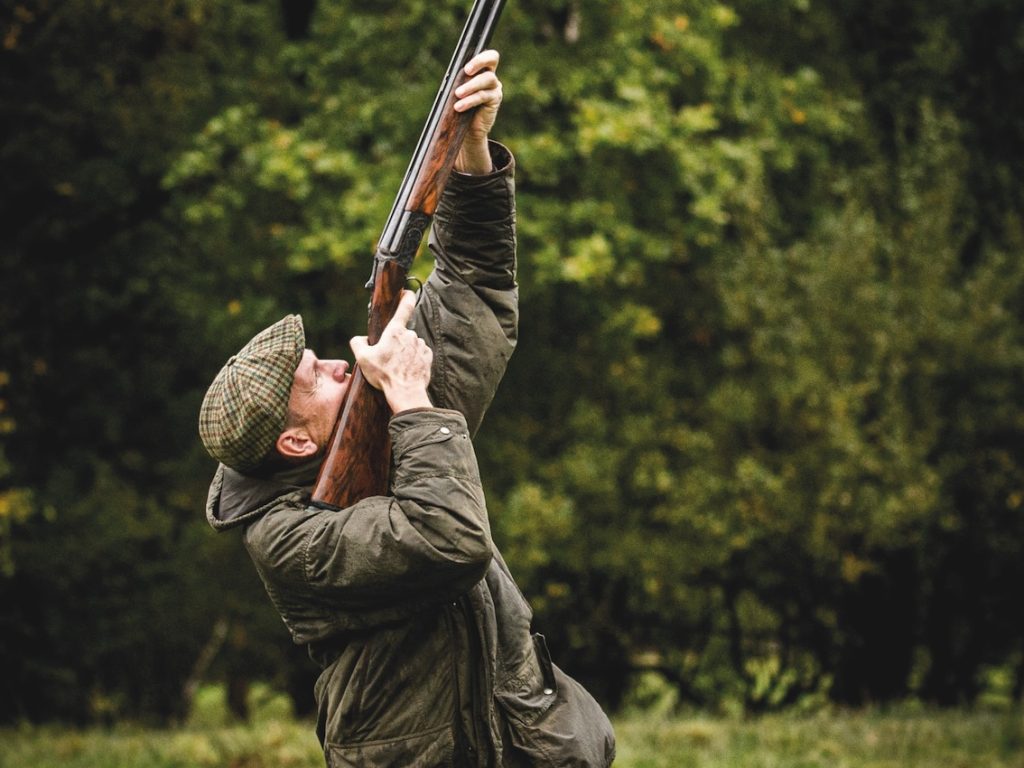Win CENS ProFlex DX5 earplugs worth £1,149 – enter here
Pheasant shooting at the Towie shoot, Aberdeenshire
Pheasant shooting: A day's driven pheasant shooting in near Arctic conditions.
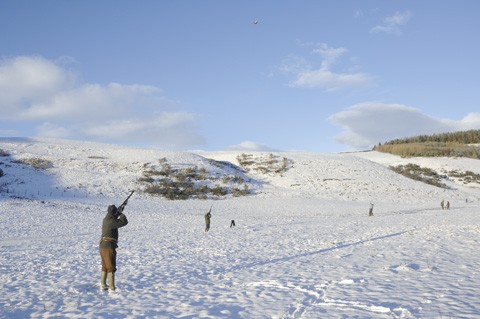
There are not many commercial shoots in the UK that hold an annual driven day for tenant farmers on the estate.
But it has been a long-standing tradition on the Tillypronie estate in Aberdeenshire to invite all the estate farmers to take a gun on the renowned Towie pheasant shoot.
“There are records of farmers’ days in the old estate game books, and I was pleased to carry on the tradition from my father,” explained the current laird, the Hon. Philip Astor, who took over running the 15,000 acre estate in 1984 after his father’s death. “The day is held in addition to the more traditional beaters’ day at the end of the season, and our 12 or so let days.”
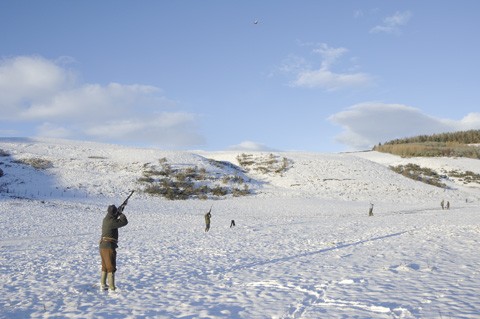
With a pheasant shoot known as one of the best in Scotland, it is an invitation to clear diary space for.
The shoot is laid out along a series of rolling Donside valleys, with the western skyline dominated by a 2,800ft corbett called Morven.
When I visited last January, the estate was under half a foot of snow and the mercury was well below freezing.
The cloudless sky and snow-dusted pines made for a perfect shortbread tin image.
The Towie shoot is held over 1,500 acres, making use of the estate’s dramatic sweeping glens and valleys with the River Don weaving along its northern boundary.
Head pheasant keeper Robin Geldard and trainee underkeeper Darryll Paton greeted the 11 guns and army of beaters outside the beaters’ bothy at 9am.
The day was to be a mixture of outlying drives and some key plantations at the heart of the shoot.
The guns did not draw pegs but were to be placed at each drive by Philip.
Clad in smart Tillypronie estate tweed, the shoot staff briefed the team on the day ahead before setting off for the inaugural drive, Torrycrien.
As we climbed inside Robin’s Land Rover he explained that many of the drive names are derived from the local Doric dialect.
“It is still spoken in the north east of Scotland, and many of the guns here today will speak amongst themselves in Doric,” he said.
Charlie Anderson farms 140 acres on the edge of Tillypronie.
“Like many of the guns here today, I only shoot twice a year – the tenant farmers’ day and the beaters’ day. Until recently it was the same farmers accepting Mr Astor’s invitation, but this year there are many more of us venturing out with a shotgun.”
After a chilly 15 minute wait the ringnecks started to stream above the guns.
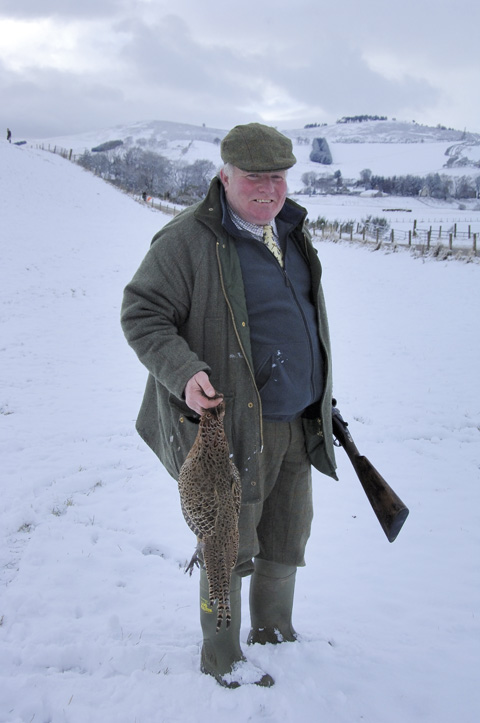
Conservation in mind
There are a total of 15 drives on the estate, many of which were designed with advice from the GWCT’s Ian McCall.
As a vice-chairman of the GWCT, Philip is a keen conservationist and tries to fully utilise the estate’s difficult terrain to provide habitat not only for game birds, but many other upland species.
“We are pretty high up here and Tillypronie’s terrain does not lend itself to growing cover crops, so we make use of conifer blocks to hold birds and often meet to discuss how best to push plantations in accordance with the wind,” said Robin.
As the guns lined out next to a clear fell we could see the pretty hamlet of Towie, where many of the guns went to school.
Ian Anderson said he did not know of any other estate that offered locals such a spectacular shoot.
“We all look forward to the day. It is a lovely gesture and brings the community together.”
The estate also boasts a grouse moor keepered by Lee Williams, who was lending a hand in the beating line.
“Robin and I help each other out on shoot days. After the pheasant season closes he assists with heather burning and I help out where I can,” he explained.
The penultimate drive before lunch, Easter Auldton, took place next to Tillypronie’s moor.
The fires burned into the adjacent moor gave the hillside a stripy appearance where the snow lay deeper on the short, young heather.
A winter’s tale
As we waited for the birds to be flushed from the block of larch in front of us, we watched Gordon Stephen’s herd of Aberdeen Angus cows migrate over the hill away from the hubbub of the shoot.
Around our wellies, the tips of ling heather and rushes were beginning to poke through the carpet of thawing snow.
Farmer and forestry contractor Gordon was born on Tillypronie and is the third generation of his family to farm the estate.
“I only take my shotgun out of its cabinet a few times a year so relish the opportunity to shoot on such a prestigious shoot.”
The fourth drive is known as Milton.
Standing at the base of a steep hillside, the guns needed to have a steady footing for this drive.
The efforts of the assiduous beating team paid off handsomely – in controlled, steady waves pheasants streamed over the heads of the guns.
This drive was definitely not for the novice shot.
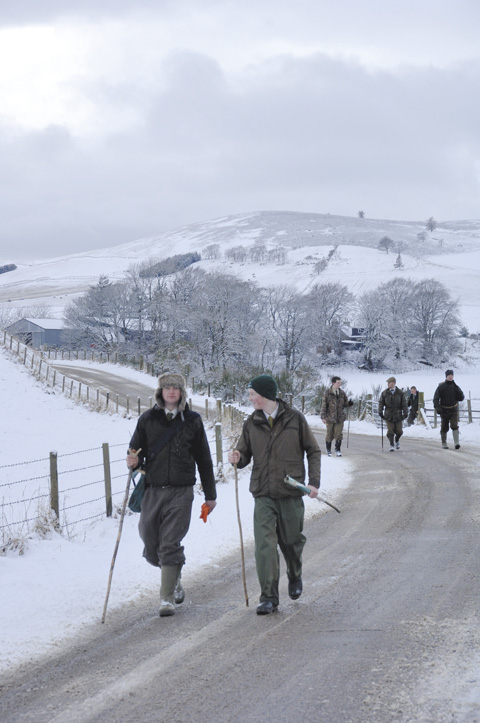
The next generation
Lunch was held in a converted steading below the Milton wood.
This is no ordinary shoot lodge, however.
It is a shrine to the sport of pheasant shooting – every wall is adorned with sporting art, photographs, cartoons and old pheasant shooting adverts from magazines.
“Collecting sporting art is a bit of a weakness of mine,” admitted Philip as he stoked the wood burner. With a floor to ceiling window at one end, natural light fills the room and makes for an extremely luxurious pit stop.
The postprandial drive, Nether Towie, was the signature drive of the day.
With the tranquil sound of meltwater burns flowing from the hills, the guns were positioned in a splash at the base of a sweeping hill.
“I do not shoot enough to warrant buying my own shotgun,” said Derek Smith.
“My family has farmed the estate since 1930, so I have shot on the farmers’ shoot since I was 15 years old, but I only shoot twice a year.”
Robin brought his beaters gently forward, allowing plenty of time for the birds to rise and soar over the guns.
Once the drive was in full swing the ringnecks streamed across the valley in an attempt to reach the safety of the conifer plantation behind us.
The Highlands provided us with a spectacular finale for the day – a winter sunset tinting the sky with vivid pink and tangerine hues.
The last drive, Chapel Wood, saw the guns line out with their backs to the Don and in front of Robin’s stone cottage.
Nestled between rolling hills, with far-reaching views of the grouse moor, it was easy to see why Robin had keepered the estate for 13 seasons.
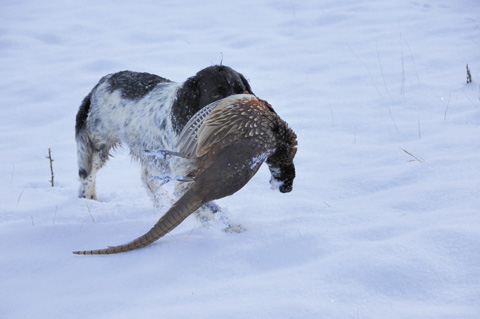
For this drive, I accompanied Derek’s father, Sandy, to his peg.
“My sons Derek and Stevie are the fourth generation to farm Tillypronie,” he said.
Just as Sandy finished his sentence, a dozen pheasants fanned out from the plantation ahead.
There was no time for my normal pre-drive interview as the birds continued to stream above us.
From start to finish the drive provided sport for every gun up and down the line.
It was a knock-out finish to the day.
Why Towie is mooted as one of Scotland’s finest pheasant shoots is clear to see.
The topography, landscape and views alone are worth booking a day for.
The shoot certainly warrants its impeccable international reputation.
The day ended with a whisky tasting session in the bothy, with each farmer bringing their favourite label for others to try.
“The shoot needs the support of the tenant farmers, so holding this special day is a big social occasion,” explained Philip. “It is a day quite unlike any other.”
For more information on the Towie shoot contact David Smart at Strutt & Parker on 01330 824888.
For more shoot features click here
Related Articles
Get the latest news delivered direct to your door
Subscribe to Shooting Times & Country
Discover the ultimate companion for field sports enthusiasts with Shooting Times & Country Magazine, the UK’s leading weekly publication that has been at the forefront of shooting culture since 1882. Subscribers gain access to expert tips, comprehensive gear reviews, seasonal advice and a vibrant community of like-minded shooters.
Save on shop price when you subscribe with weekly issues featuring in-depth articles on gundog training, exclusive member offers and access to the digital back issue library. A Shooting Times & Country subscription is more than a magazine, don’t just read about the countryside; immerse yourself in its most authoritative and engaging publication.






